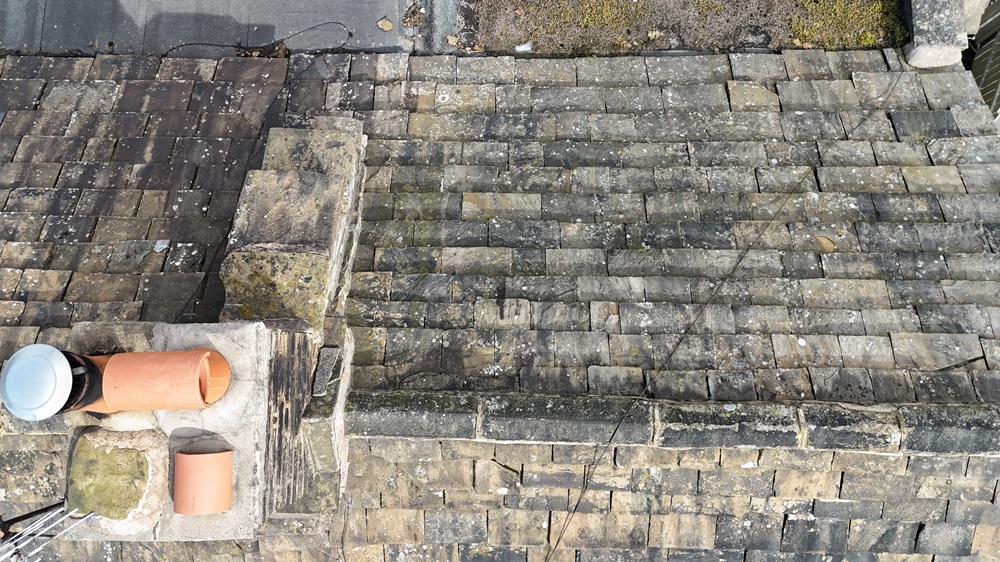Level 3 Surveys
Understanding Level 3 Surveys: Why a Building Survey is Essential for Older and Unusual Properties
When purchasing a property, especially one that is older, has been extensively modified, or has unique architectural features, understanding its true condition is critical. That’s where a Level 3 Building Survey comes in. The most comprehensive of the survey types, a Level 3 survey provides an in-depth analysis of a property’s structure and condition, making it essential for buyers who need a complete understanding of what they’re investing in.
In this blog, we’ll explore what a Level 3 survey is, when you need one, and how it can save you significant time, money, and stress by uncovering hidden issues before you buy.
What is a Level 3 Building Survey?
A Level 3 Building Survey, previously known as a Full Structural Survey, is the most detailed type of home survey available. It is designed for properties that are older, larger, or have undergone significant changes or renovations. The survey involves a thorough inspection of the property, both internally and externally, to identify any potential issues, defects, or structural problems.
Unlike a Level 2 Homebuyer Survey, which is more focused on identifying major visible issues, a Level 3 Building Survey goes far deeper. It includes an analysis of:
- The property’s structural integrity (e.g., foundations, walls, and roofs)
- Potential subsidence or movement
- Damp and timber decay
- The condition of internal and external elements like windows, doors, ceilings, and chimneys
- Plumbing, drainage, and electrical systems
- Evidence of hidden problems like dry rot or woodworm
- Any safety hazards or risks, such as asbestos
The survey report will also recommend potential repairs, estimate the cost of these repairs, and advise on the urgency of the work required. It may even include suggestions for ongoing maintenance to ensure the property’s longevity.
Key Features of a Level 3 Survey
Comprehensive Examination: The surveyor will conduct an in-depth, non-intrusive examination of all accessible parts of the property, including the roof, loft spaces, and foundations. While they won’t carry out invasive tests (such as lifting floorboards or removing wall coverings), they will inspect areas where hidden problems might be lurking.
Detailed Report: The Level 3 survey provides a much more detailed report than other types of surveys. It includes a full breakdown of all defects, potential issues, and areas of concern. The report will also explain the causes of these defects, their likely impact on the property, and how they should be repaired.
Cost Estimates and Repair Priorities: One of the unique aspects of a Level 3 survey is that it provides not only information about defects but also estimated repair costs. This helps you understand the financial impact of any issues and gives you a clear idea of what to expect in terms of future maintenance.
Tailored Advice: The report often includes specific advice on repair techniques and materials. This is especially important for older or period properties where the use of modern materials could be detrimental to the structure.
No Valuation: Unlike some Level 1 and Level 2 surveys, a Level 3 Building Survey does not typically include a property valuation. Its focus is entirely on assessing the condition of the building. If you need a valuation, you can request this separately or choose a combined survey and valuation package.
When Do You Need a Level 3 Survey?
A Level 3 Building Survey is not necessary for every property. It is most suited for:
Older Properties: If you’re purchasing a property that is more than 50 years old, a Level 3 survey is strongly recommended. Older properties are more likely to suffer from structural issues, outdated building materials, or hidden defects that may not be obvious during a standard viewing.
Listed or Historic Buildings: If the property is listed, particularly old (e.g., Victorian, Georgian, or earlier), or has historical significance, a Level 3 survey is essential. These buildings often require specialist knowledge to assess potential problems like damp, decay, or structural movement that can arise due to their age and the materials used.
Properties with Alterations: If the house has undergone major renovations, extensions, or structural changes, a Level 3 survey will identify if the work has been carried out to a high standard and whether any future problems may arise as a result.
Unusual Construction Methods or Materials: Non-standard buildings, such as timber-framed houses, thatched roofs, or properties built with unconventional materials, should have a Level 3 survey. The surveyor will have the expertise to identify potential risks associated with these materials and provide detailed advice on how to maintain them.
Neglected or Deteriorating Properties: If the property has been neglected, poorly maintained, or has visible signs of damage (e.g., cracks in the walls, damp patches, or leaks), a Level 3 survey is invaluable. It will uncover underlying problems and provide a plan for necessary repairs.
Peace of Mind: Even if the property appears to be in good condition, a Level 3 survey provides reassurance that there are no hidden surprises waiting after you’ve purchased the home. The in-depth nature of the survey ensures that every detail has been thoroughly assessed.
Benefits of a Level 3 Survey
Comprehensive Knowledge: The detailed nature of the Level 3 survey provides a complete picture of the property’s condition, giving you confidence in your purchasing decision. You’ll be fully aware of any problems and their implications before you commit.
Avoid Costly Surprises: Discovering major defects after purchasing a property can be financially devastating. A Level 3 survey ensures that you’re aware of any significant issues upfront, giving you the opportunity to negotiate with the seller or budget for repairs.
Negotiating Tool: If the survey uncovers significant issues, such as structural movement or damp, you can use this information to renegotiate the price. Armed with a detailed report, you have the power to either lower the offer or request that the seller makes repairs before completion.
Tailored Maintenance Advice: Older properties often require ongoing maintenance to keep them in good condition. The Level 3 survey provides advice on the specific care needed for the property, helping you plan for future upkeep and avoid further damage.
Long-Term Investment: Understanding the true condition of a property helps you make a long-term investment decision. Even if you plan to renovate or modernize, knowing the building’s existing condition gives you a clear roadmap for repairs and improvements.
How a Level 3 Survey Can Save You Money
While a Level 3 survey may cost more than other survey types, it can ultimately save you thousands of pounds. If significant defects like structural problems, damp, or roof damage are uncovered, these could lead to extremely costly repairs if not identified early. A Level 3 survey ensures you’re not blindsided by unexpected expenses after purchase.
Additionally, the detailed information provided can be used as a bargaining tool. If the survey reveals problems, you may be able to negotiate a lower purchase price or request that the seller covers the cost of repairs before finalizing the sale.
Choosing the Right Surveyor for a Level 3 Survey
For a Level 3 Building Survey, it’s essential to choose a qualified, experienced surveyor with a deep understanding of older or unusual properties. Look for a RICS (Royal Institution of Chartered Surveyors) accredited surveyor who has experience working with the specific type of property you’re buying.
Surveyors with local knowledge are also beneficial, especially if you’re buying in an area with specific issues such as subsidence, flood risk, or conservation restrictions.
Level 3 Survey
A Level 3 Building Survey is the most detailed and thorough option for assessing the condition of a property. Whether you’re purchasing a historic home, an older building, or a property with unique construction, this survey provides critical insights that can save you from unexpected costs and give you peace of mind.
By investing in a Level 3 survey, you’ll have a clear understanding of the property’s structural health, be well-prepared for future repairs, and avoid costly surprises down the line. It’s a small investment compared to the security it offers, ensuring your home-buying process is informed, smooth, and secure.




